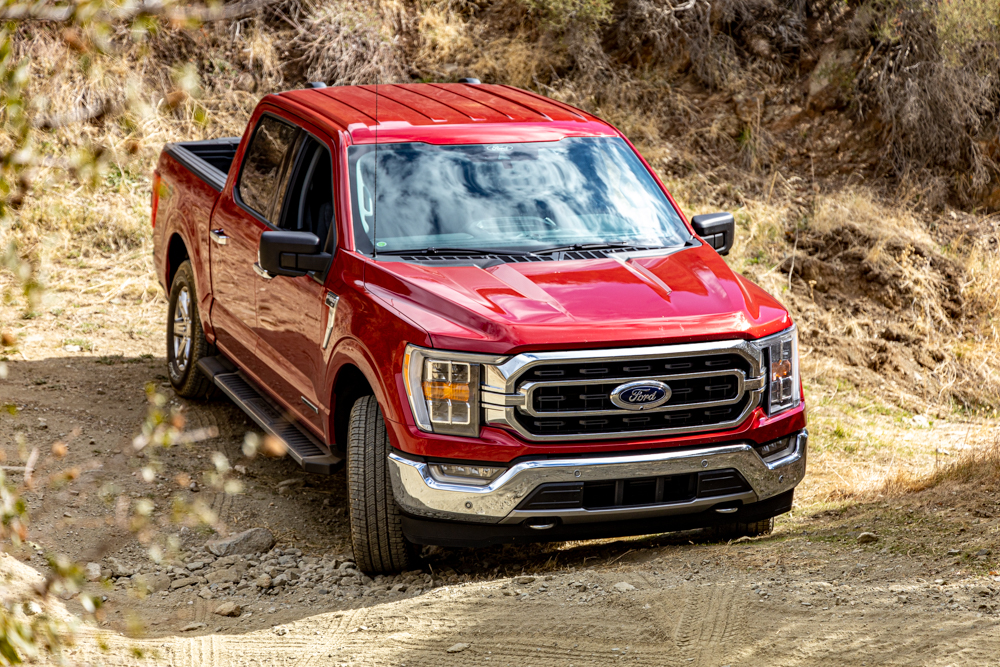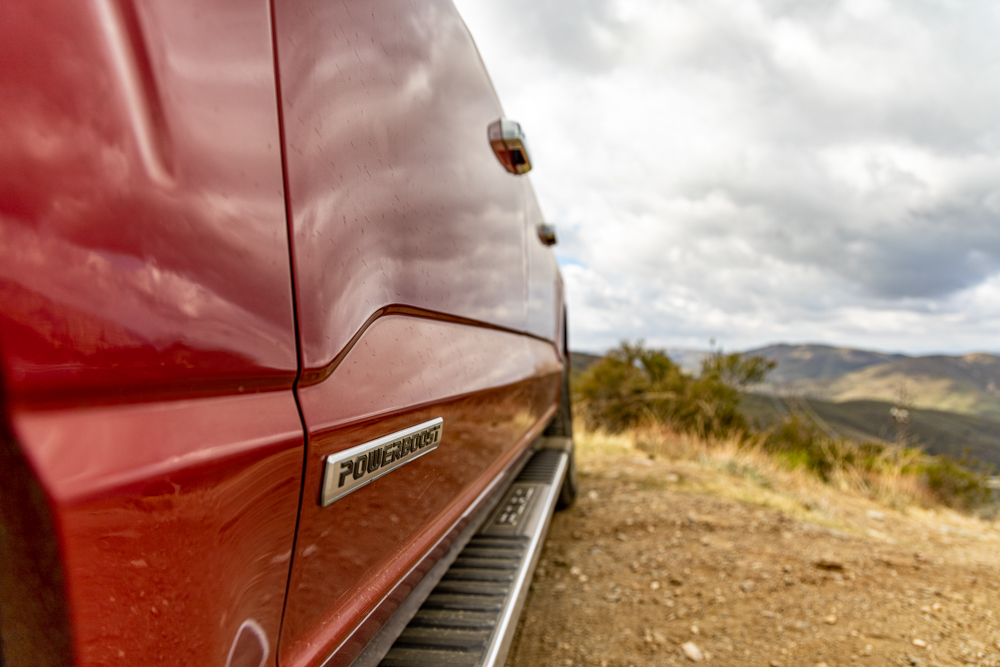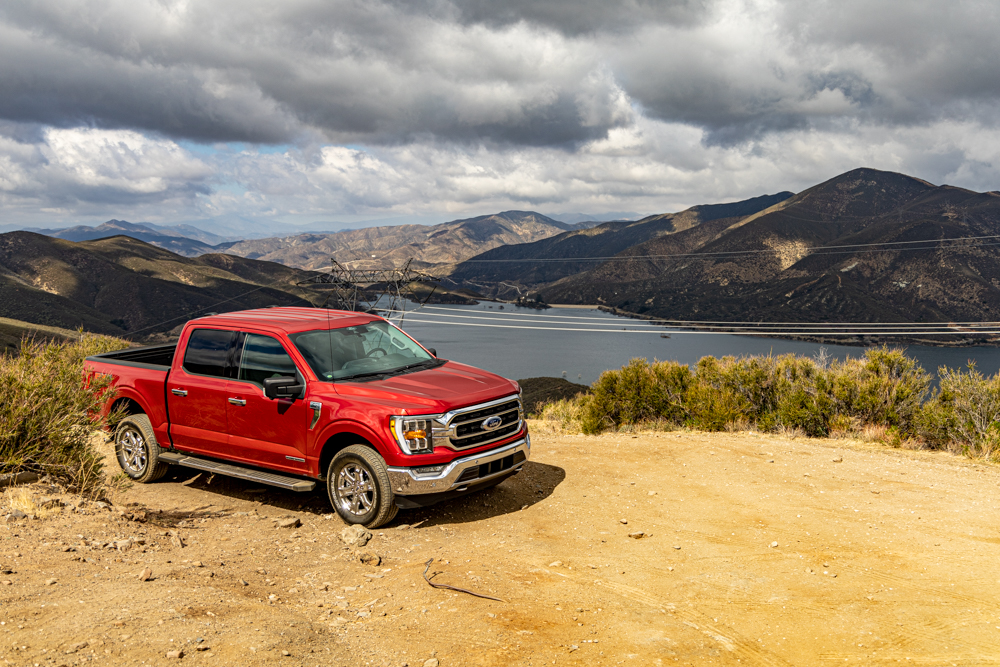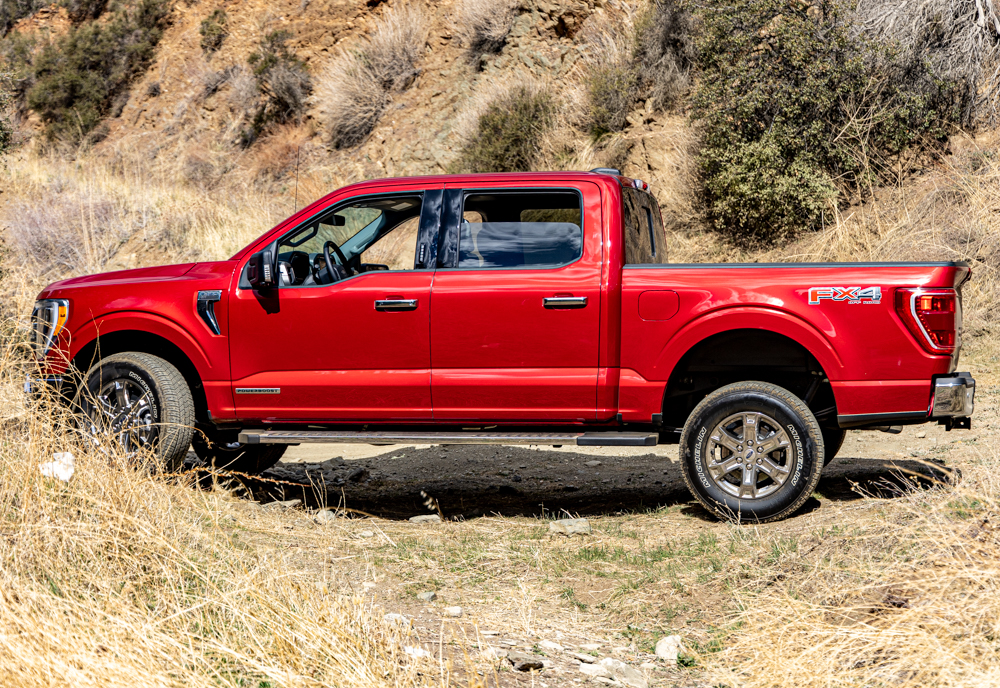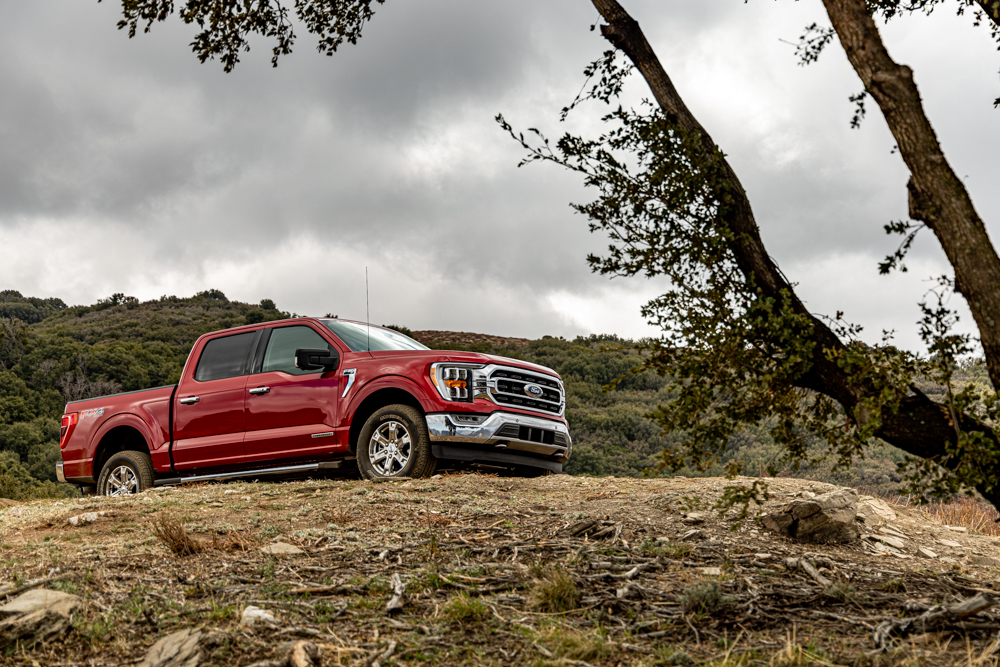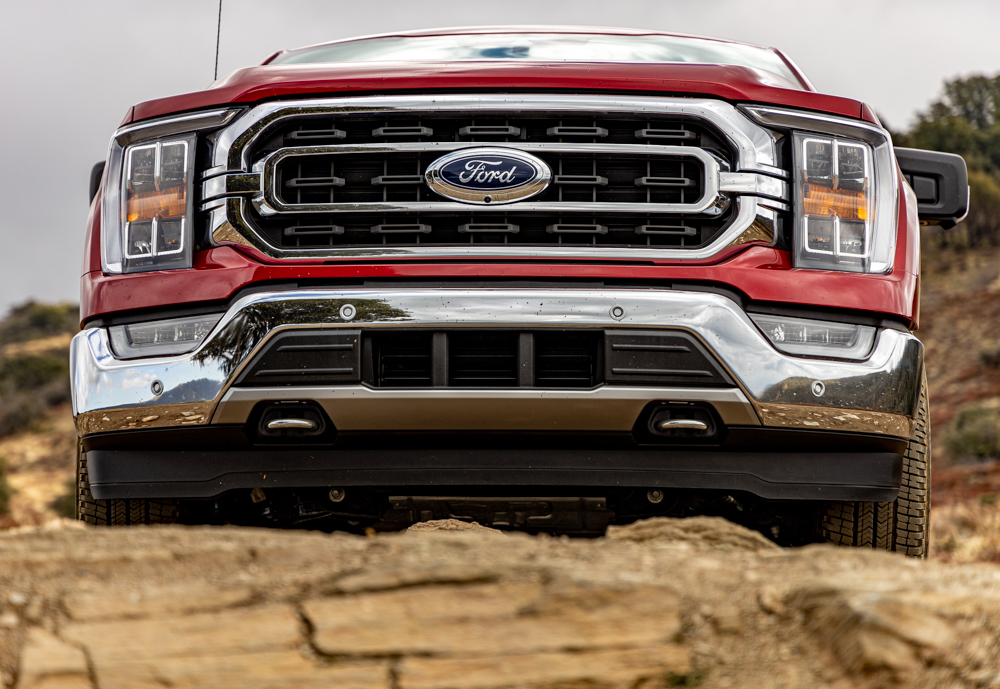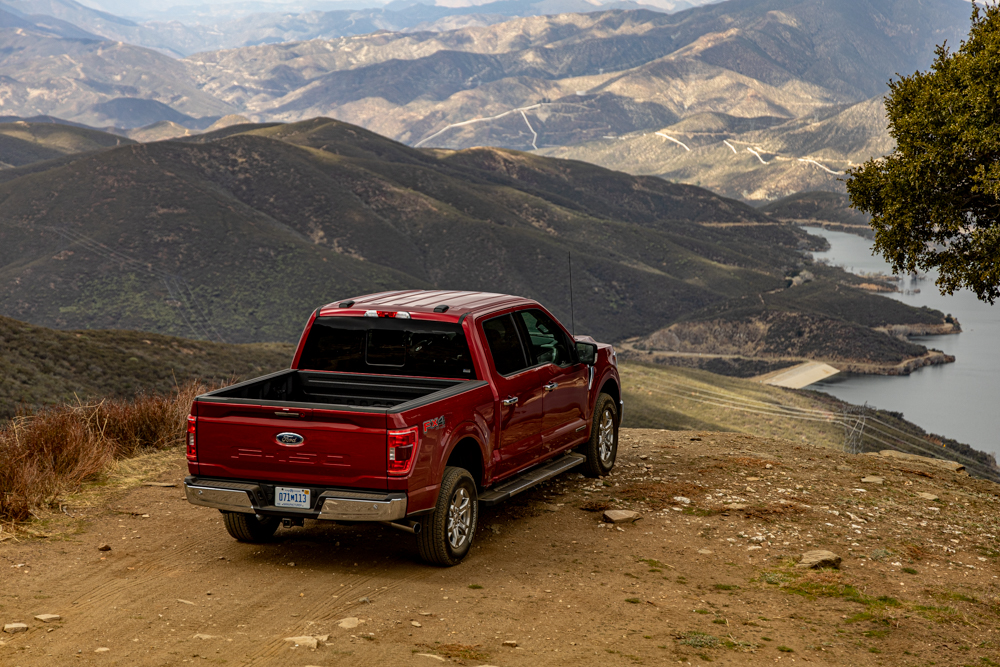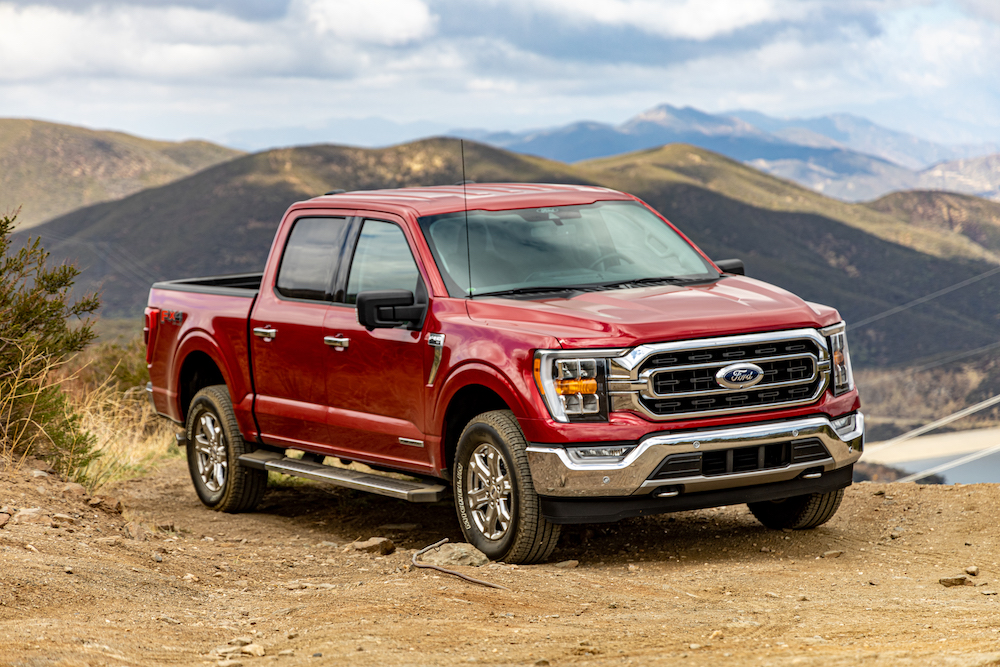F150 PowerBoost Review: Ford’s First Hybrid Truck is Powerful & Relatively Efficient
Prefer to watch our F150 XLT PowerBoost tour on YouTube?
Click HERE!
Don’t expect Prius mileage, but the Ford F-150 PowerBoost is the most efficient F-150 of all time. And it’s fast!
Want a more in-depth 2021 Ford F-150 XLT PowerBoost review? Head over HERE to our sister site, Ford Truck Enthusiasts. (We’ve also reviewed the King Ranch trim level HERE.) The goal for our Electric Vehicle Forums coverage is to focus solely on the PowerBoost’s Hybrid drivetrain, which launched alongside the fully-electric Mustang Mach-E this year.
Prefer to watch our F150 PowerBoost driving impressions on YouTube?
Click HERE!
Ford’s First Hybrid Truck
New for the 2021 model year, Ford finally introduced a hybrid drivetrain for its best-selling truck, the F-150. The PowerBoost starts with a twin-turbocharged 3.5L V6 engine, aka the 3.5L EcoBoost. Ford then integrates an electric motor into the truck’s 10-speed automatic transmission. This bumps horsepower to 430 (30 more than the 3.5L EcoBoost), and torque to 570 lb.-ft. (70 more).
As it sits today, the 2021 Ford PowerBoost offers the second-most available Ford truck torque, behind the monster 6.7L PowerStroke engine found in the Ford SuperDuty lineup. It’s also faster to 60mph than the second-generation Ford F-150 Raptor. Sure, Ford will likely put the third-generation Raptor, due later this year, back atop the F-150 heirarchy, but it’s still a remarkable offering.
Speaking of which, Ford makes the PowerBoost optional in every single trim level. But only if you opt for a four-door SuperCrew cab configuration. The hybrid drivetrain costs about $4,500 in the XL and XLT trims, but less as you go up the fancier trims (Lariat, King Ranch, Platinum, and Limited). As I write this, there are no Hybrid Raptor plans, which we suspect is related to the added weight. About 500 lbs MORE than a standard 3.5L EcoBoost-equipped F-150!
PowerBoost Fuel Economy Crushes (*Previous Review Loaners)
I drove our loaner PowerBoost just under 900 miles and the computer said I averaged 18+ mpg. If you’re coming from a Hybrid sedan or smaller crossover or looking at the PowerBoost’s EPA ratings, that might sound horrifying. So let me add a little context.
When I drive review vehicles, I don’t try to get good gas mileage.
To be fair, now that we’ve added EVForums to our roster, I should try to find more time to do real-world mileage tests. (But you’d be surprised how short a loan feels.) Also, I come from the sports car world where we’re more about smiles-per-gallon. When I reviewed the Shelby GT350, I rocked out 7mpg over two tanks of gas. The C8 Corvette wasn’t much better. And, in the 5.0L Coyote-powered F-150 (also a 4×4 SuperCrew with the FX4 package), I hit somewhere in the 10mpg range.
In the context of our PowerBoost review, I drove 80+ mph for long distances up and over mountain passes that bring tractor-trailers to a crawl. Ripped as many 0-60 runs and on-ramp accelerations as possible because this F-150 is crazy-quick. (For a 5,500 lb metal box.) Ran around-town errands every day and sat in bumper-to-bumper Los Angeles traffic. Idled the truck for over an hour, testing features and amenities. And spent about four hours off-roading up and down a mountain to film reviews.
All of that and the PowerBoost still managed 18+ mpg as well as 27 electric miles.
It is worth noting that the PowerBoost drivetrain does NOT earn the best highway fuel economy out of the available engines. That goes to the diesel option, which is 1 mpg better. Otherwise, the EPA rates the PowerBoost at 25mpg city, 26mpg highway, 25 combined with rear-wheel drive. Or 24 mpg city/highway/combined for 4×4 trucks. Either way, the PowerBoost offers the best combined EPA rating for an F-150.
Of course, real-world testing usually reveals different results. Often worse, but sometimes better with a light-footed driver and a tailwind.
Full-Electric Mode
If you’ve ever owned a vehicle with Auto Start/Stop, you know what it’s like when your engine shuts down off at a stoplight. The PowerBoost offers this too. But it also turns off while you’re driving. That’s right, if you’re coasting to the next light or down a mountain, or maintaining almost no throttle, the engine clicks off, and you’ll find yourself in full EV mode.
For long-time Hybrid owners, you’ve probably experienced this many times. But it’s certainly a new sensation behind the wheel of a full-sized Ford truck that weighs over 5,500 lbs. I think the right driver and road combination could earn some truly spectacular results.
Plus, driving a silent F-150 made me even more excited for the fully electric F-150, which should debut next year as a 2023 model. (Especially after seeing what Rivian did with their prototypes on the Apple TV Show, Long Way Up.)
PowerBoost Fun Factor
As with all hybrids, economy and efficiency are very driver-dependent. In my case, while I was in-context-impressed with the PowerBoost’s economy, I spent way more time using the integrated electric motor to hotrod the 3.5L EcoBoost.
In short, the F-150 PowerBoost is an absolute blast to drive.
It’s quick to accelerate and quite capable off-road. (Although the FX4 Package tires aren’t the best.) And it’s the best F-150 I’ve ever driven in the twisties. (Perhaps the hybrid elements help lower the overall center of gravity?)
Towing & Payload
As we’ve discussed, the PowerBoost drivetrain adds about 500 pounds over a 5.0L V8 or 3.5L EcoBoost drivetrain. Despite the added performance and efficiency, total vehicle weight is directly related to towing and payload capacities. Compared to the 5.0L V8 and standard 3.5L EcoBoost, PowerBoost payload drops by approximately 750-800 lbs. And you lose 300 to 1,000 lbs of towing capability.
If those figures are important to you, stick with the non-Hybrid F-150. But if you’re not at the limit, I’d venture that the PowerBoost will do a far better job than the others handling loads and towing, thanks to the added torque.
Should You Buy a New F-150 PowerBoost?
Even with a full hybrid system and all the extra aluminum body components, there’s no getting around the fact that the F-150 is a big, heavy truck. In other words, don’t expect the same fuel economy results as a (hybrid or not) sedan or smaller crossover.
It’s also worth noting that, as a $4,500 premium on lower trim levels, it would take hundreds of thousands of miles to recoup the expense at the gas pump.
Still, the 2021 F-150 PowerBoost is an absolute blast to drive. It’s the most efficient F-150 ever, especially for around town. There’s a full-electric mode. And it’s also very fast if you’re into the performance side of things. It’s my pick for best F-150 motor of the year despite the cost…
At least until that F-150 EV arrives and starts wiping the showroom floors with its ICE siblings.
Photos: Michael S. Palmer

